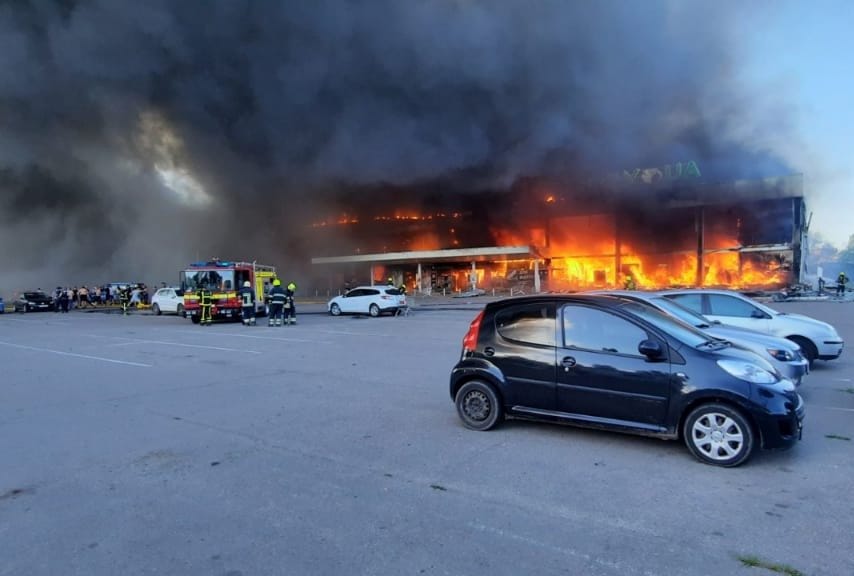Are We On a Slippery Slope to War
Is America's Training Ukrainian Fighters the First Step Toward Greater Involvement?

Today’s headline from The Washington Post sent chills down my spine. “Pentagon to train Ukraine on Patriot missile system in Oklahoma,” it read, a headline with echoes of the United States’ early involvement in Vietnam.
As reported by the Post:
The Pentagon is planning to bring Ukrainian troops into the United States for training on the Patriot missile defense system, a U.S. official with direct knowledge of the development said Tuesday, signaling the Biden administration’s latest test of Russian President Vladimir Putin’s threshold for Western intervention in the conflict.
The story comes just a few days after the White House issued a joint statement from President Joseph R. Biden, Jr. and German Chancellor Olaf Scholz that “reiterated their support for Ukraine’s sovereignty and independence” and “reaffirmed their unwavering solidarity with Ukraine and the Ukrainian people in the face of Russia’s aggression.” The two leaders promised to continue providing “the necessary financial, humanitarian, military and diplomatic support to Ukraine for as long as needed.” The leaders have stopped short of committing troops, but the provision of weapons and advisors is likely to be seen as an aggressive act in Moscow and feels very much like the slow slide into quagmire we witnessed in Vietnam.
Language is important here. President Joe Biden and other Western leaders have framed support for Ukraine as support for democracy, using language that mirrors rhetoric used by American leaders as they slow-walked us into Vietnam and sprinted into Iraq. Presidents Eisenhower and Kennedy both cited the potential fall of Vietnam as one in a series of dominoes that could fall and lead to the spread of Soviet and Chinese Communism. Both sent American advisers into Southeast Asia, along with economic and military aid, and under Kennedy and then President Johnson we moved from proxy fight to direct war, with the murder of 56,000 American soldiers and somewhere in the neighborhood of 3.5 million Vietnamese soldiers and civilians on both sides.
In 2002 and 2003, President George W. Bush and his administration used similar language as they pushed forward with its wars in Afghanistan and Iraq. The argument, according to the Bush team, focused on democracy. Liberating Iraq and democratizing the nation would result in democracy’s spread across the region, allowing it to take hold across the Middle East and Africa. They were spectacularly wrong, with both wars lasting far longer than the military experts told us they would and the number of death — mostly Iraqis and Afghans — rising into the millions. (The failures of the the 43rd president of the United States can also be traced back to the presidency of his father, George H.W. Bush, and the invasion of Iraq, and to Ronald Reagan’s efforts during the Iran-Iraq War and in Central America.)
What we are witnessing now is a kind of containment strategy in the name of Western Democracy — the capitalization is purposeful because that is how it is uttered by many in the foreign policy establishment and the press. Ukrainian forces are being bolstered by American and Western European money and weapons, and trained by Western militaries.
Americans, so far, have been supportive of the American aid to Ukraine, and of Ukrainian efforts to repel Russian forces. This public support, however, has remained somewhat theoretical, a from-a-distance support that is fairly easy given that the ones who are fighting and dying are not American soldiers.
A Chicago Council on Global Affairs poll in December found “most Americans still support aiding Ukraine – 65% support sending weapons, 66% support economic aid, 75% support increasing sanctions on Russia, and 73% support accepting Ukrainian refugees to the US,” CNN reported (https://www.cnn.com/2022/12/06/politics/us-support-ukraine-aid-russia-poll/index.html). Yet, Americans also are telling pollsters there are limits to how much support they are willing to provide. They are overwhelming supportive of Ukraine, but showing slippage in the support — and the slowly eroding support is tied to the ways in which the war is being felt at home. According to the poll, “the share of Americans who believe the US should support Ukraine for ‘as long as it takes’ dropped 10 percentage points since the summer.”
About half, 48%, now say the US should support Ukraine “for as long as it takes, even if American households have to pay higher gas and food prices as a consequence,” while a similar 47% say the US should “urge Ukraine to settle for peace as soon as possible so that the costs aren’t so great for American households, even if that means Ukraine will lose some territory.” In the Chicago Council’s July survey, a 58% majority said the US should support Ukraine for as long as needed.
And this erosion has occurred without a single American live being put at risk. Biden has said no American troops will fight in Ukraine, but the trajectory of this war and our growing involvement as advisor and sponsor mean that even that remains on the table. We need to have that conversation now, need to understand that we are fighting this war in a proxy manner, with our money and our arms if not our fighters.
We have to be honest about this — with the American public, and with the Ukrainians.



